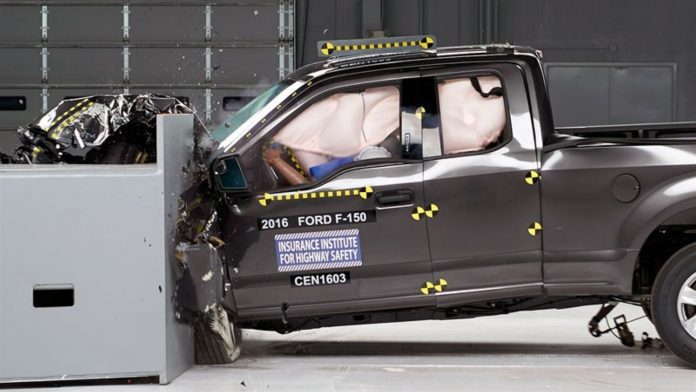The Insurance Institute for Highway Safety, IIHS, recently tested crew-cab versions of the Chevrolet Colorado, Ford Ranger, Jeep Gladiator, Nissan Frontier, and Toyota Tacoma, and none of the trucks received top ratings for rear-occupant safety.
The institute updated its moderate overlap front collision test last year. In that test, cars at 40 mph collide with a fixed barrier occupying 40% of the car’s width. According to the institute, “research showed that in newer vehicles, the risk of a fatal injury is now higher for belted occupants in the rear than for those in the front.” This is why the revision added a dummy to the backseat. The safety of rear-seat passengers has not decreased; instead, the front has become safer while the back has received little attention.
In the new test, a dummy the size of a 12-year-old kid or a petite woman rides in the backseat behind a dummy around the size of a typical adult male. To receive a good rating, a vehicle must secure the occupants in place to guard against an elevated risk of head, neck, chest, or thigh injuries. IIHS also tracks how close the dummy’s head is to the front seatback and other interior objects.
In addition, IIHS assigns vehicles one of four grades: poor, marginal, acceptable, or good. The Nissan’s acceptable rating for the rear-seat dummy was the best of the five trucks in the test. The Chevrolet, Jeep, and Toyota all had poor performances, while Ford’s performance was marginal. The dummy’s head also came worryingly close to the front seatback in all vehicles but the Jeep.



